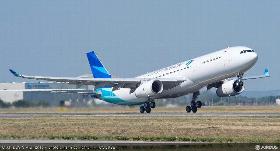

Airfreight volumes in Asia Pacific have dropped to 5.1 billion freight tonne kilometres (FTK) in January, down from the end of 2014, but a year-on-year (YOY) rise of seven per cent, according to the Association of Asia Pacific Airlines (AAPA).
January 2015 was up from 4.8 billion FTK registered in the same month of 2014 but was the lowest since April 2014, when FTK was 5.1 billion. In 2014 FTK rose and fell with each month, dropping to four billion in February, spiking to 5.7 billion in March, before dropping back to 5.1 billion in April. In both May and June, FTK was 5.2 billion, rising to 5.4 billion in July before dropping to 5.2 billion for August and September. FTKs rose to 5.6 billion for October, peaking at 5.8 billion in November and dipping back to 5.6 billion for December.
AAPA director general, Andrew Herdman, says: “Airfreight markets continue to see good growth, reflecting sustained demand from North America and Europe for Asia manufactured goods.”
Herdman, however, warns that challenges remain for Asian carriers though falling oil prices are welcomed. “The demand outlook appears positive for the coming year, on expectations of further growth in the global economy. Nevertheless, Asian carriers continue to face challenges marked by a competitive operating environment and the need to carefully monitor capacity.” Capacity in available FTK (AFTK) was 8.3 billion in January; a YOY rise of 4.8 per cent, which is lower than the January 2014 AFTK increase of 5.3 per cent. AFTK fell from December 2014 when it was 8.5 billion, which had been a YOY rise of 4.7 per cent. The January rise was larger than most seen in 2014. In February it was up by 1.6 per cent, followed by 5.9 per cent in March and 5.3 per cent in April. May was lower at four per cent, followed by 3.4 per cent in June and 3.2 per cent in July. In August, AFTK was up by 3.2 per cent, followed by four per cent in September. AFTK rose by 3.8 per cent in October and 1.9 per cent in November.
The load factor in January was 61.8 per cent, up 1.3 percentage points on January 2014, but below the 2014 figure of 64.9 per cent. The January load factor was the lowest seen in the region since February 2014, when it was 61.2 per cent.
The load factor in 2014 peaked at 68.4 per cent in March, before dropping to 64.3 per cent in April and rising again to 64.9 per cent in May and 66.1 per cent in June. It declined in July to 65.3 per cent and dropped further in August to 63.5 per cent.
The load factor rose slightly in September to 64.1 per cent, increasing to 66.4 per cent in October and 68.3 per cent in November before dipping to 65.5 per cent in December.













